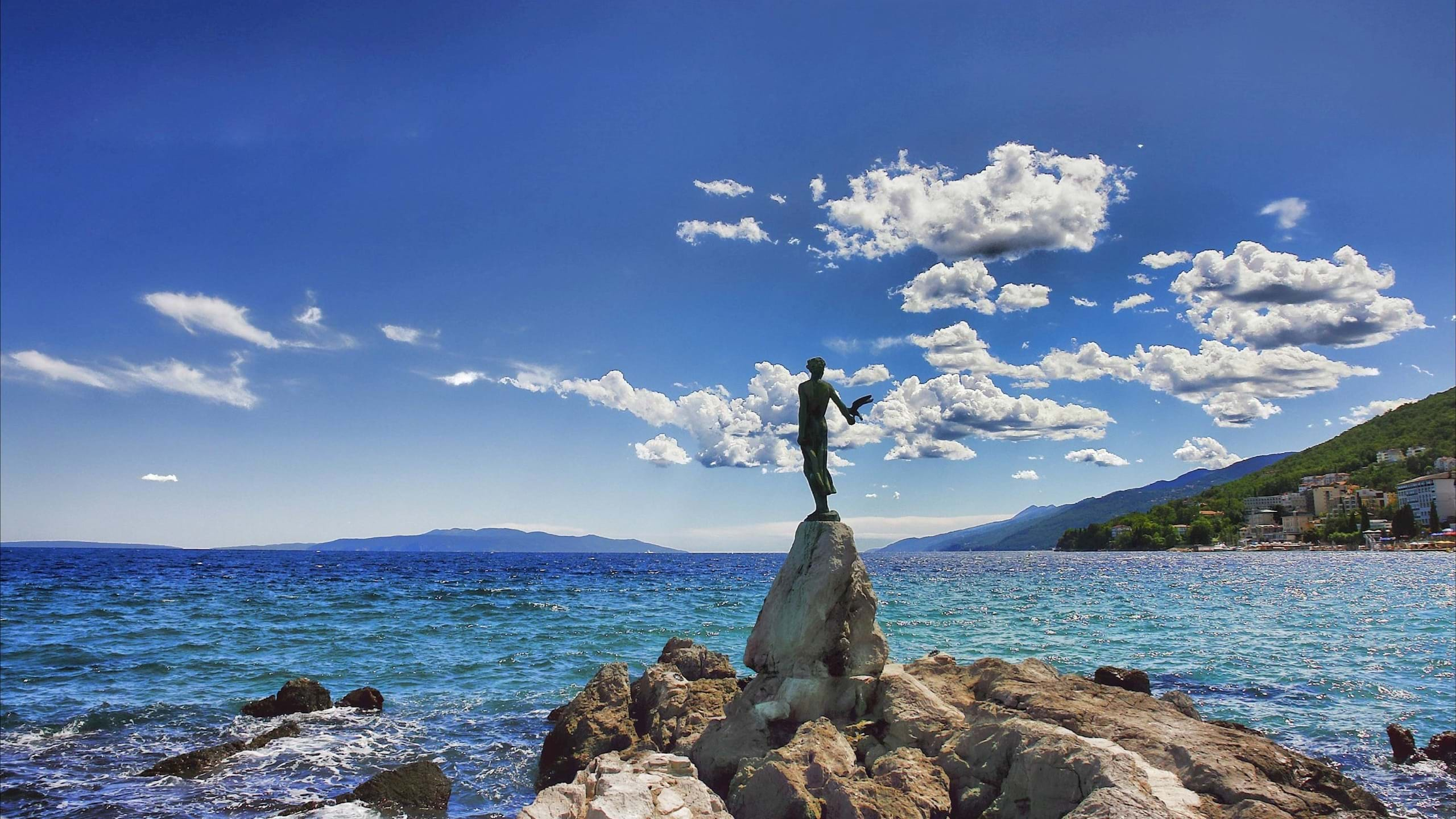Opatija
The birthplace of European tourism
For 175 years, Opatija has been offering a host of sights and delights to experience, try, taste and get to know. It's time to start exploring!
Located exactly where the largest Istrian mountain Učka plunges into the Adriatic Sea, Opatija has been delighting visitors with its diversity for 175 years. A beach or a mountain peak? A coastal promenade or hiking and walking trails through ancient forests? The modernity of Viennese Art Nouveau architecture or the tradition of medieval stone hill-forts? Mediterranean cuisine with an abundance of fish and wine or continental cuisine with "forest fruits" and meat delicacies? Swimming or sleighing, sailing or parachuting, active holidays or relaxation in the spa and wellness centres? You don't have to choose, because you can experience it all right here, on the Opatija Riviera ...
Opatija has been one of Europe's favourite tourist destinations since the mid-19th century, when it took hold as the "birthplace of Croatian tourism" following the construction of the famous Villa Angiolina, an amazing holiday home set in the middle of a unique park just steps away from the sea. It quickly became a sought-after elite destination, attracting royalty, celebrities, writers and composers as well as renowned scientists. But why? It’s all thanks to its unique climate that combines the healing air of the mountains and the sea, natural beauty, parks and architecture, luxury hotels and a unique coastal promenade that stretches for more than 10 kilometres.
It takes only about 20 minutes to reach the 1,400-metre-high mountain peak from the crystal clear sea, which offers an excellent view of the Kvarner Bay and Istria, uncovering the fascinating world of Opatija's hinterland. Apart from the mountain crossed by wooded paths, hiking trails and climbing slopes, you will also be delighted by the indigenous features of rural estates, the medieval walls of Veprinac, the dense forests of sweet chestnuts or maruni – a native chestnut species known for its unique taste, as well as excellent local wines and olive oils...
Veprinac
For centuries, the old town of Veprinac has watched over Kvarner, and passing through the city gates opens a door onto the historical path of this region like a time machine. This path leads next to the Church of St. Anne, where more than 500 years ago, one of the most important legal documents in this area, the Veprinac Statute, was written. Nearby, it is possible to see Komunšćica, a former administrative building and prison, where an ethno collection is now kept. A few hundred steps up the stone staircase is all it takes to reach the lookout spot, in front of the majestic Church of St. Mark, which overlooks the entire bay.
However, Veprinac is not just a history-book of the whole region, but also a live stage where performances of vocal groups - or klape - and folk festivals take place as well as where you can taste local specialties and wines. With well-maintained promenades connected to the centre of Opatija and the peak of Učka, Veprinac is perfect for all generations.
Volosko
This fishing village carrying the essence of the Mediterranean has always been dedicated to the sea. Among the crowded rooftops of old houses, there are meandering stone staircases and narrow streets filled with art galleries and ateliers.
They are all directed towards the heart of Volosko - the "mandrać" (a little harbour). At dawn, fresh fish arrives in the small harbour that can immediately be found on the menus of numerous Volosko taverns and restaurants, the "secret" of the local gastronomic scene, which judging by the number of first-rate restaurateurs, belongs to Croatia’s best.
Mandrać is also a cosy place for a morning coffee with a sea view or an afternoon stroll along the Lungomare coastal promenade that begins in Volosko. It’s also the perfect stage for events such as evenings with "klape" vocal groups, jazz concerts and art events.
Poljane
Halfway between the waves and the top of Učka lies Poljane, a place that in recent years, due to the many holiday homes, has been known as an ideal refuge for all those who love comfort and relaxation in the peace and quiet of nature.
Surrounded by lush greenery, Poljane offers plenty of opportunities to stroll through forest trails or take on more challenging mountain paths, while the large Church of St. Peter is a captivating attraction in the town centre.
The sunny Učka slopes facing south are suitable for agriculture and winemaking, which is why Poljane is also known as a great place to taste the authentic products of local producers.
Dobreć
Dobreć, "hidden" in the ancient forests of sweet chestnuts or maruni, is best known for this indigenous fruit of the Učka slopes. Larger and sweeter than their chestnut “relatives”, the maruni are a world renowned local delicacy, and during October in Dobreć, the chestnut festival Marunada takes place, a long standing ”celebration” that is listed as one of Europe's finest gastronomic events.
The forest surrounding Dobreć is intersected by historical trails, which are often the destination of asparagus or mushroom pickers during the spring and autumn months, as well as walking paths leading to the top of Učka or the sea shore.
In addition to maruni, which are prepared in various ways including by baking or boiling in order to be added to desserts or even ice-creams - the local farmhouses are also known for olive oil, honey and other products that are best tasted in authentic Dobreć taverns.



















